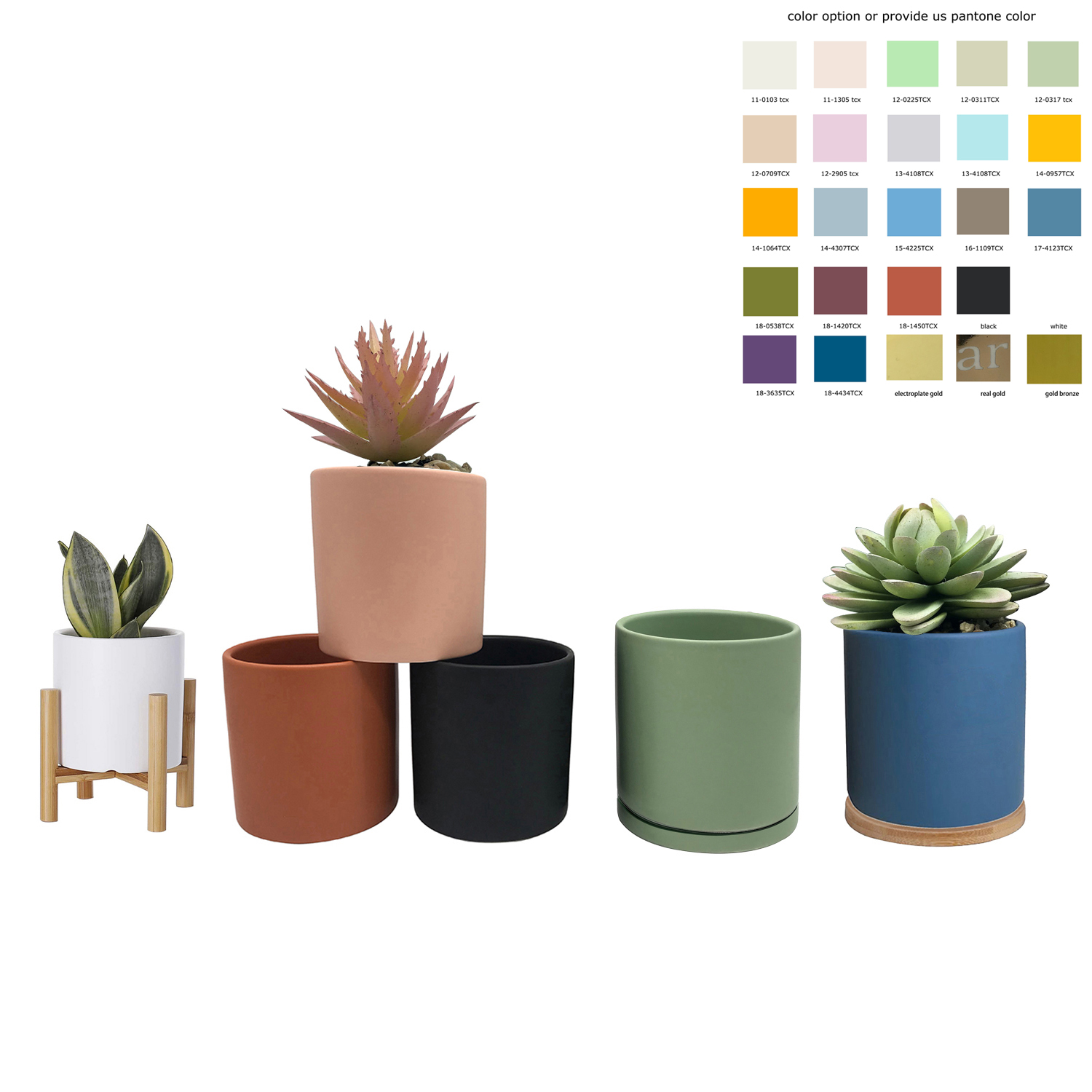What Is A Planter?
Time of issue: 2023-08-08 10:59:49In a world where concrete jungles seem to expand relentlessly, the need for green spaces and natural beauty becomes increasingly apparent. The humble planter plays a vital role in bringing a touch of nature to urban environments and personal abodes alike. But what exactly is a planter, and why is it such an essential element for creating vibrant and verdant spaces? Let's delve into the essence of planters and their significance in our lives. the term "planter" has become a common fixture in many households, gardens, and public spaces. A planter is a simple yet ingenious container used for growing plants, flowers, or herbs in a controlled environment. These versatile vessels come in various shapes, sizes, and materials, making them a fundamental tool for both seasoned gardeners and aspiring plant enthusiasts.
Unveiling the Definition: What is a Planter?
A planter, in its simplest form, is a container designed to hold and nurture plants, flowers, or herbs. These vessels come in various sizes, shapes, and materials, catering to the diverse needs and preferences of gardeners, landscapers, and homeowners. From small decorative planters adorning windowsills to large outdoor containers accentuating public spaces, their purpose remains constant: to provide a home for greenery, beautify surroundings, and infuse life into otherwise sterile areas.
Types of Planters
Planters have evolved over centuries, embracing different styles and materials. Here are some common types of planters found in both indoor and outdoor settings:
Ceramic Planters: These classic and elegant planters are made from baked clay and are often adorned with intricate designs and glazes. They are popular choices for both indoor and outdoor use, providing a touch of sophistication to any space.

Terracotta Planters: Made from unglazed clay, terracotta planters are porous, allowing air and water to pass through the sides. Their rustic charm makes them popular for various plant types.
Plastic Planters: Lightweight and affordable, plastic planters are versatile and suitable for both indoor and outdoor use. They come in a wide range of colors and styles, making them ideal for various settings.
Wooden Planters: Adding a natural touch to any space, wooden planters are aesthetically pleasing and can be crafted in different shapes and sizes. However, they require regular maintenance to ensure longevity.
Metal Planters: These sturdy and durable containers add a contemporary and industrial vibe to gardens and urban landscapes. Common materials include aluminum, steel, and iron.
Hanging Planters: Designed to suspend from ceilings or hooks, hanging planters save space and provide an eye-catching display of cascading greenery.
Self-Watering Planters: Incorporating a reservoir system, self-watering planters offer a convenient solution for maintaining proper moisture levels, reducing the frequency of watering.
The Importance of Planters: Greening Urban Spaces
The significance of planters extends far beyond their aesthetic appeal. As cities grow denser and green spaces diminish, planters serve as miniature gardens, nurturing life within the confines of urban environments. Here are some key reasons why planters are crucial in urban settings:
Air Quality Improvement: Plants absorb carbon dioxide and release oxygen through photosynthesis, improving air quality in their surroundings. Planters allow urban dwellers to enjoy cleaner and fresher air despite the concrete-dominated landscape.
Stress Reduction: Exposure to greenery has been linked to reduced stress and anxiety levels. Planters in office spaces, homes, and public areas provide a sense of tranquility and connection with nature.
Community Bonding: In public spaces, planters foster a sense of community engagement. People can come together to care for and appreciate the shared green spaces, promoting a sense of belonging and responsibility.
Biodiversity: Planters create opportunities for biodiversity within urban areas. They attract birds, insects, and other small animals, contributing to a more balanced ecosystem.
Food Production: In urban settings with limited gardening space, planters allow individuals to grow their vegetables, herbs, and fruits, promoting sustainable and locally sourced produce.
Conclusion
In a world where nature is increasingly pushed to the periphery, planters play a crucial role in bringing greenery and life back into our lives. From their various shapes and sizes to their contributions to air quality, stress reduction, and community bonding, these humble containers pack a powerful punch. Whether you're a seasoned gardener or a novice plant enthusiast, incorporating planters into your surroundings is a beautiful way to create a greener, more vibrant world—one pot at a time. So, let's embrace these mini gardens and sow the seeds of positivity in our concrete landscapes.
RECENT POSTS
- The Benefits of Wholesale High-Quality Ceramic Products for Retailers
2025-12-17
- Can You Make an Ashtray with Air Dry Clay? Pros, Cons, and Safer Alternatives
2025-12-17
- The Impact of Ceramic Materials in Energy-Efficient Buildings: Benefits and Applications
2025-12-04
- Top 7 Ceramic Cookware Health Benefits: Why It’s a Safer Choice for Your Kitchen
2025-12-04
- How to Clean Ceramic Planters and Improve Their Lifespan?
2025-11-17
- 15 Best Ceramic Holiday Gift Ideas for 2025: Thoughtful, Elegant & Heartfelt
2025-11-17
- Stoneware vs Porcelain vs Earthenware: Quick Decision Guide
2025-10-09
- Are Ceramic Glazes Food Safe? The Truth Behind the Shine
2025-10-09










